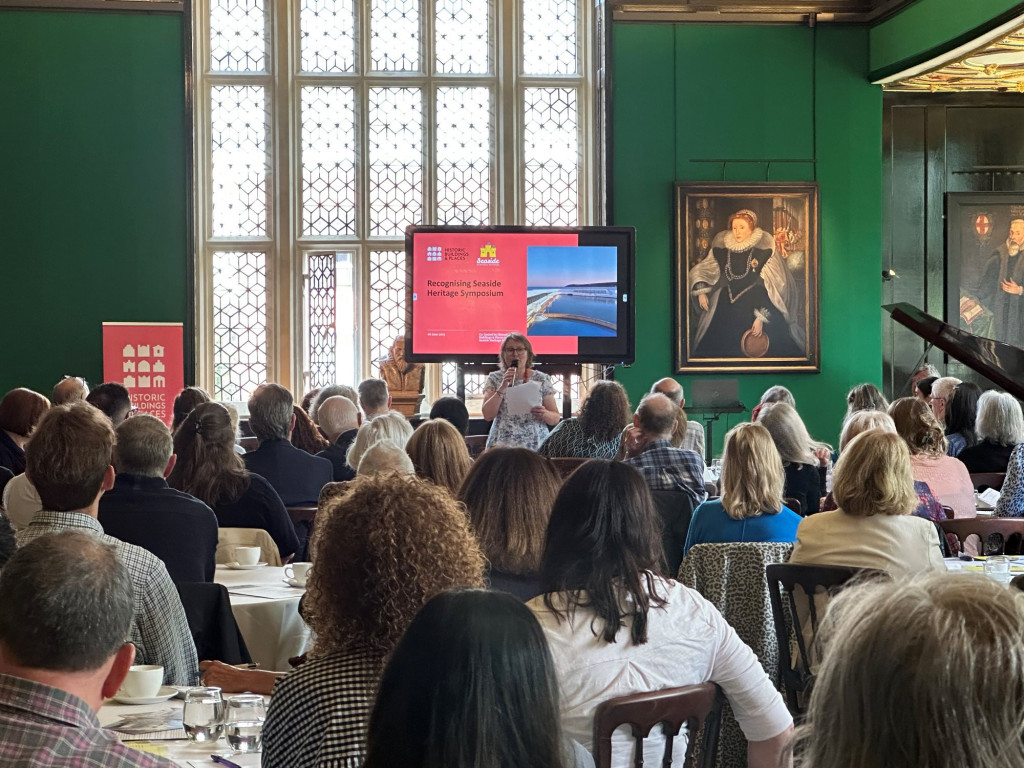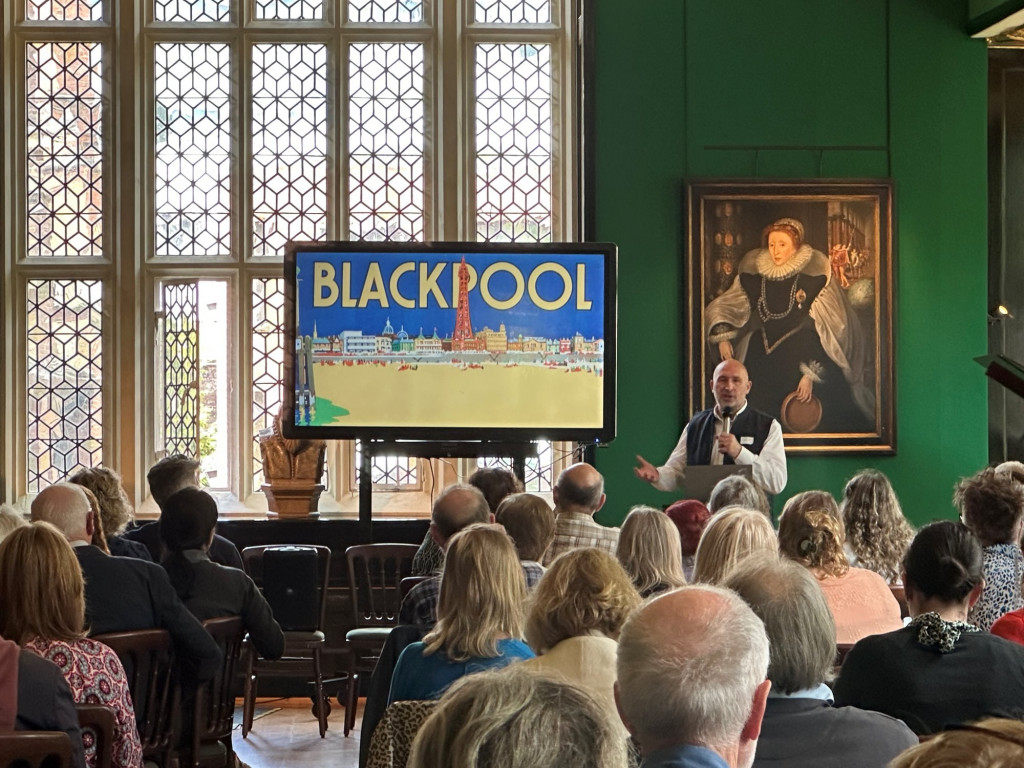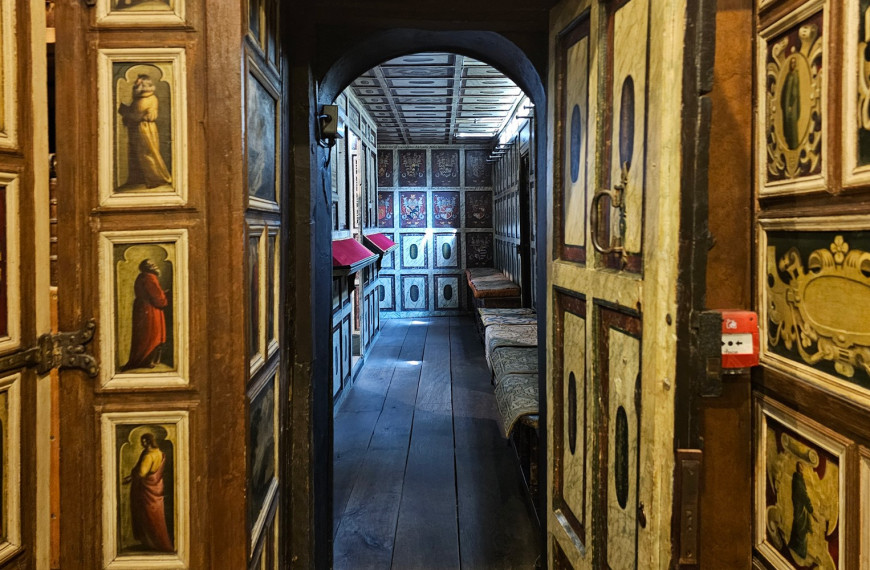On Friday 6th June 2025 we were absolutely delighted to welcome nearly 100 people to our first ever Recognising Seaside Heritage Symposium, co-hosted with our friends at the Seaside Heritage Network and held in the magnificent Great Chamber at the Charterhouse in London, where Elizabeth I prepared for her coronation in 1558.
The day-long event saw heritage professionals from all around the country come together to discuss the unique challenges and opportunities facing Britain’s seaside heritage.
The event started with a keynote address from Carl Carrington, Head of Planning at Blackpool Council. Although Blackpool has a surprisingly small number of listed buildings, many of them are very significant, presenting an enormous challenge to preserve and maintain them. In particular, Blackpool is unique in having three piers, all of which are historically important but only one of which the council has managed to successfully get listed – because the challenge and cost of maintaining a listed pier, subject to the effects of the weather and water surrounding it, would be too much to commit to.
It is not only piers that suffer damage due to nature; Carl highlighted the increase in strong winds and violent storms that are battering the whole city due to climate change.
However, it isn’t all doom and gloom! One of the key ways in which Carl is meeting the challenges facing Blackpool’s heritage is through people: challenging the perceptions that people locally and further afield have of seaside towns and heritage, developing heritage spaces for community benefit, and engaging with locals to encourage them to take ownership of their heritage, to use it in their daily lives, and even to get involved through volunteering. As an example, Blackpool Council purchased the Winter Gardens in 2010, carried out an ambitious restoration project, and now the magnificent Grade II* building is a vibrant community hub for theatre and concerts, dining, weddings, special events, and venue hire for meetings and conferences.
Following Carl’s fascinating talk, we heard from Kelcey Wilson Lee, Director of Programmes and Deputy CEO at the Architectural Heritage Fund, Rachel Macfarlane from the National Lottery Heritage Fund, Geraint Franklin from Historic England and Hana Loftus from HAT Projects about the challenges and opportunities facing seaside heritage.
While the issues facing seaside heritage may be daunting, the speakers were keen to highlight the resources available. As part of ‘Heritage Places’, one of their three strategic initiatives, the NLHF is now looking to transform 20 places around the UK, utilising heritage to boost local pride, revitalise the towns’ economies and improve people’s connections to where they live and work. The NLHF actively invites applications for heritage grants from £10,000 to £10 million.
Historic England has also been actively supporting seaside heritage, in particular through its recent Heritage Action Zones (HAZ) project which saw towns such as Ramsgate revitalised through research, restoration, new and updated listings, as well as active engagement with local schools and communities.
A challenging but ultimately successful project undertaken by HAT Projects at Jaywick Sands in Essex turned an area of severe deprivation, flood risk and poor housing quality into a well-adapted, safe, attractive and characterful place that residents could feel proud of.
After a break for lunch and an opportunity to network, we then welcomed four speakers to present their best practice case studies.
Alexandra Starritt, Heritage At Risk Officer for Sefton Borough Council, shared the skilful conservation work that her team had carried out in the Lord Street Conservation Area in Southport, in particular with respect to the unique cast iron verandas.
Floortje Hoette, CEO at Leas Lift in Folkestone, talked about the incredible restoration of the Grade II listed, water-balanced Victorian funicular lift, providing an accessible and green mode of transport in the town, supported financially by revenue from a new onsite café.
Faye Davies from architectural firm Burrell Foley Fischer explained they were transforming Great Yarmouth Winter Gardens, a Grade II* listed building on Historic England’s Heritage At Risk register, into a ‘People’s Palace for all’, ensuring the design is heritage-led but with modern functionality, that it has a defined and sustainable use, and aiming for it to be a catalyst for regeneration of the wider environment surrounding it.
Kelly Nash, Corporate Performance Manager at Portsmouth City Council, spoke about Hilsea Lido, which had been managed by a local community group since 2009 but by 2021 was at risk of closure due to the challenges of Covid-19. The council was able to obtain funding as part of a wider Levelling Up grant and is now near completion of the initial reconstruction, with plans for further phased development to fully regenerate the site.
We finished off the afternoon with roundtable discussions around three key challenges: how to make the case for saving seaside heritage in the face of climate change and rising sea levels; how to help resorts actively promote their seaside heritage to new audiences; and how to use heritage to challenge negative perceptions around British seaside resorts.




